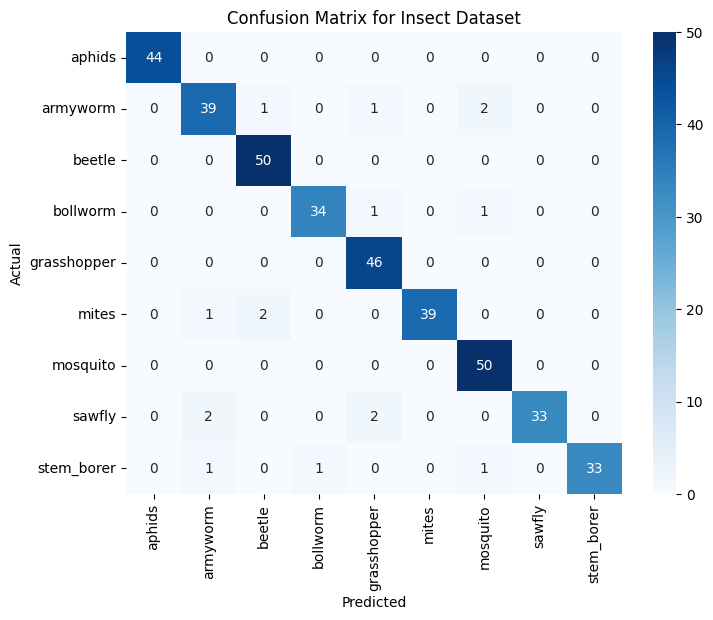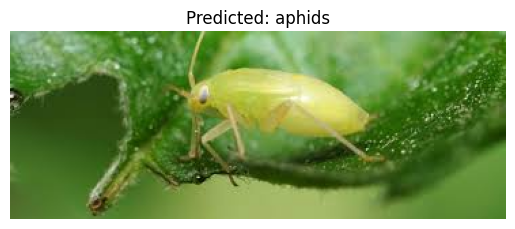Model Evaluation
Using Python (Jupyter Notebook) and libraries like matplotlib and seaborn, I tracked the model's training progress and evaluated its performance.
The training process showed consistent improvement across 11 epochs, with the loss decreasing from [initial value] to [final value]. Repeated runs of the model would take around 6-8 minuets due to the size of the dataset, although that does not seem long, between errors occurring and rewriting code, having to wait that time during the training and waiting for each epoch was to much time. Implanting CUDAS to the model would allow it to use the GPU on my machine. This increased the speed for the training. While the model achieved 95% accuracy, the confusion matrix revealed some areas where species were occasionally misclassified.
A classification report was generated to provide detailed metrics (precision, recall, F1-score) for each insect class, helping identify which species were most challenging for the model to distinguish.
Below are the Classification-Report, Confusion Matrix and Predicted Species which were constructed:


